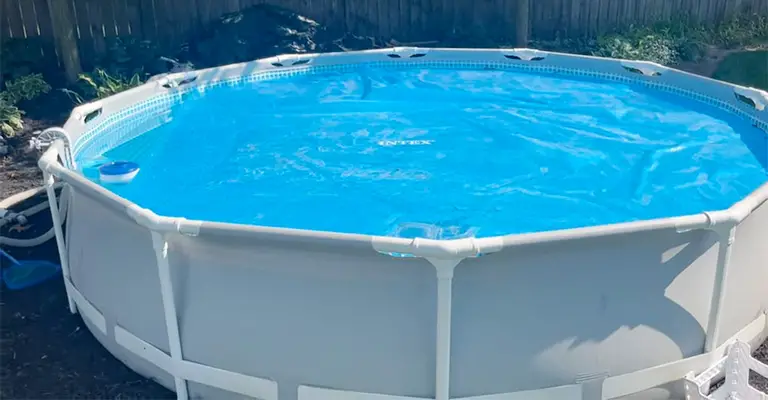Pool covers are an essential accessory for pool owners, providing a range of benefits such as debris protection, heat retention, and evaporation reduction.
However, a common question that arises among pool owners is whether water can seep through a pool cover.
Understanding the potential for water seepage is crucial for maintaining water cleanliness, preventing damage, and ensuring optimal pool conditions.
Above ground pools often experience water displacement. A cover can displace some of the pool water over the winter due to the weight of snow and ice pushing down on it.
Despite the pool owners’ knowledge, the displaced water spills harmlessly onto the deck. Tears in the pool cover can certainly lead to water seepage. Apply some tension to the cover and use a leaf rake to remove as much muck as you can.
Is Water Seeping Through Your Pool Cover?
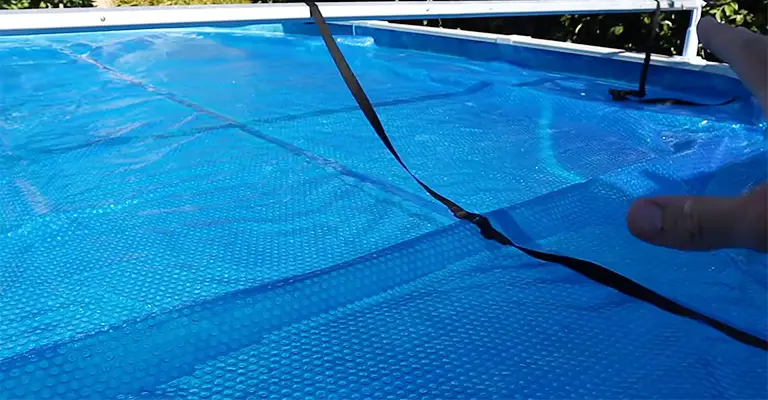
Essentially, there are two types of pool covers: the solid cover and the mesh cover. A pool and sun cover protect the pool from debris and reduce UV rays, which may promote algae growth.
There is a significant difference between the two covers in terms of their design. Typically, mesh covers allow rain and melted snow to pass through, while solid covers prevent water from leaking.
When pool owners open their pool in the spring after closing their tarp covers, there is a surprise – the water levels are lower than when they closed!
A substantial amount of water can appear to have disappeared, sometimes several inches deep. Although the first thought of this befuddling surprise may lead to suspicion of a leak, this isn’t always the case.
Following this, people often ask, “Does water seep through the pool cover?” Water does seep through pool covers, so yes, they can. There are other reasons as well why your pool may lose water over the winter that may surprise you.
This lesson is about how water can seep through a pool cover and the possible problems that can arise. Here we go!
How Does Water Seep Through Pool Covers?
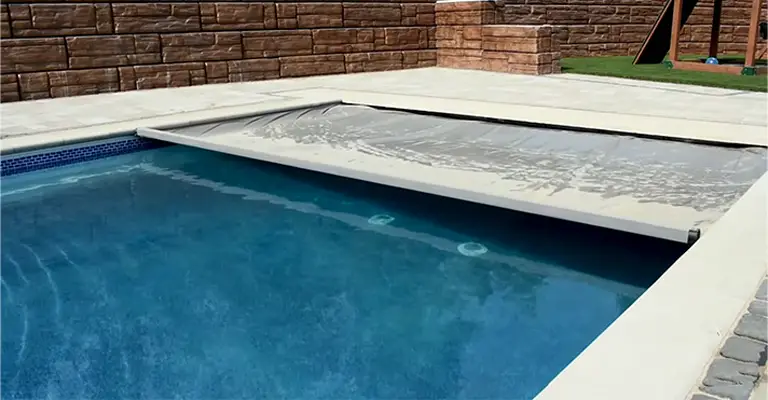
With mesh covers, debris is kept out of the pool while natural precipitate is allowed to enter.
Unlike others, these covers are generally taut across the pool’s rim, well above the water’s surface, so you don’t have to worry about water evaporating or seeping out.
On the other hand, a solid sheet of vinyl or PVC designed to act as a tarp is generally supposed to be waterproof. You’ll often see tarps covering leaky roofs because they prevent water from entering the structure.
To ensure a solid cover is applied to the pool, the cover should lie atop the water’s surface. The underlying pool water holds the weight of accumulating rain or snow to prevent the cover from collapsing.
During the installation of the cover, water bags or other weights are laid along its perimeter on the pool deck. Water will accumulate on the top of the cover over the course of months.
The cause may have been natural precipitation, or the water may have migrated through a hole in the cover. There may even be a pond on the top of the cover by springtime!
It is possible for water to seep through small holes in the cover from the pool on top. There is a possibility that more giant tears in the cover could cause even more water to escape.
Additionally, holes in the cover could allow mucky water to fall into the pool from the top. It is possible that the pool could become green if this happens.
To open your pool in the spring, you’ll need to empty the water from the top of the cover, often using a small pump or siphon. The water that has been removed may actually have seeped through the surface.
Ensure the pool cover is thoroughly inspected before placing it on the pool. The tarp may be patched with a tarp repair kit or even simple duct tape if you notice any holes or tears.
Understanding Winter Water Displacement
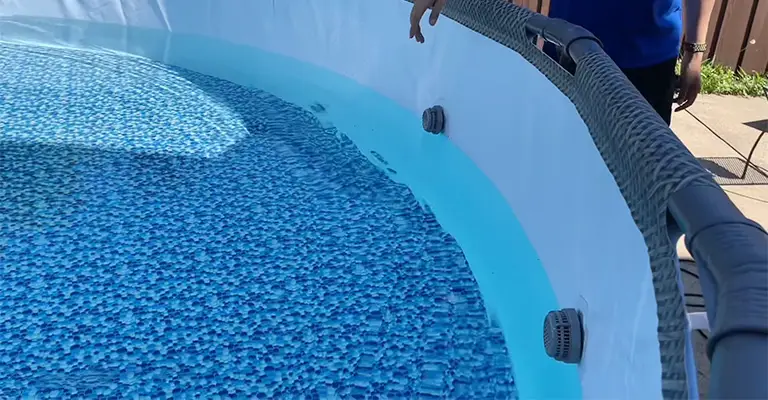
During the springtime, swimming pool owners remove their winter covers, and panic sets in. When the pool was closed for the winter, the water level was much lower than it is now.
They assume that there is a leak in the pool. Several nerve-racking phone calls are placed to the pool professionals who sold or winterized the pool. Is this a coincidence? Should we do anything? Are the repairs going to be costly?”
As common as an ice cube dropped in water, the reason behind the disappearing act may surprise you. A few ice cubes and the water spills over. You can call it displacement.
Water Displacement A Logical Explanation
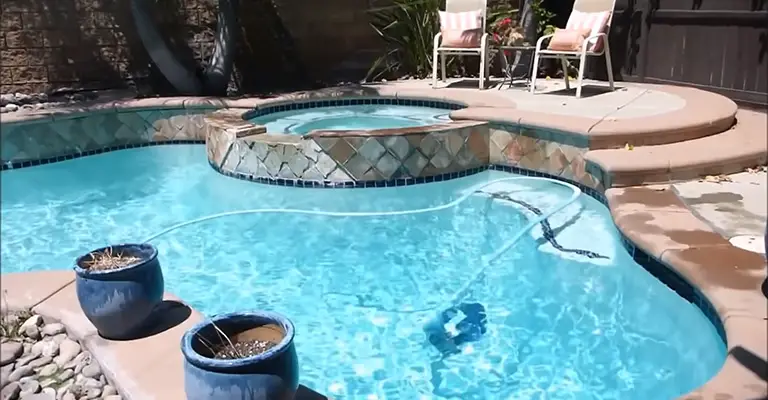
It’s quite common for above-ground pools to experience water displacement. A cover can become dislodged over the winter due to the weight of snow and ice pressing down on it.
As a result, the displaced water spills harmlessly onto the deck without the pool owners ever knowing it. Less water likely remains in the pool when the cover is removed.
While it may seem simple, this concept can be challenging for people to understand immediately. For example, fill a glass of water until it reaches the rim, then cover it with a napkin to demonstrate.
In the meantime, slightly press down in the middle of the glass so that a little water spills over. Many times, I have used this to explain this.
Our explanation is that the pool usually has a solid block of ice on top of the cover for three or four months throughout the winter, with periodic snow accumulation.
While you cannot stop the water displacement, there are a few steps you can take to avoid the problem.
- Make sure the cover is regularly cleaned of ice. You need to be careful not to damage your cover.
- With a broom, remove the snow
- You must then use a cover pump and prefilter to pump water into the pool once the cover ice melts.
It is recommended that if water appears to have been displaced when the cover is removed from a pool, Teddy Bear Pools & Spas recommends the following actions:
- Fill the pool to your desired level with water.
- Wait 36 hours.
- It is possible there is a leak if the water level has dropped again. As long as the water level has remained unchanged, there has little to worry about in terms of winter water displacement.
How Much Water to Put on Pool Cover?
It may seem beneficial to prevent too much water from collecting on the pool cover, but there are actually some advantages to some water collecting on it.
Incorporating a couple of inches of water on the cover can help keep it from whipping in the wind. A lot of water may not be displaced from underneath the cover by this amount of water.
The manufacturer of a solid cover sold by a pool supplier (rather than just a large tarp) may also provide recommendations on how much water you should place on it.
Too Much Water on the Pool Cover!
Above-ground pools, especially, are susceptible to damage caused by too much water on the cover. The water can freeze into a solid block of ice over time.
By displacing water from the pool, the cover can sag deeper into the pool due to this heavy block of ice. A lack of water might cause the ice’s weight to pull the cover inward, causing irreversible damage.
The water weight in a 24′ above-ground pool is approximately 1 ton per inch. Rainstorms and snowstorms can quickly accumulate to several tons if the cover of collected precipitation is not regularly removed.
A large amount of water can also cause the pool cover to develop thin spots or holes in addition to structural damage. Water could eventually seep through the cover if this occurs.
The Bottom Line
A pool cover lets water in, but does it let water out? Water can migrate across a pool cover. It depends on the type of cover, the condition of the cover, the amount of water on the cover, and how much water seeps through.
Using a cover pump or siphon can prevent too much water accumulation. In the spring, you may discover that a lot of water has been lost in your pool.
Do not automatically assume there is a leak! In the winter, the water was displaced, which could be one of the reasons for this condition.

